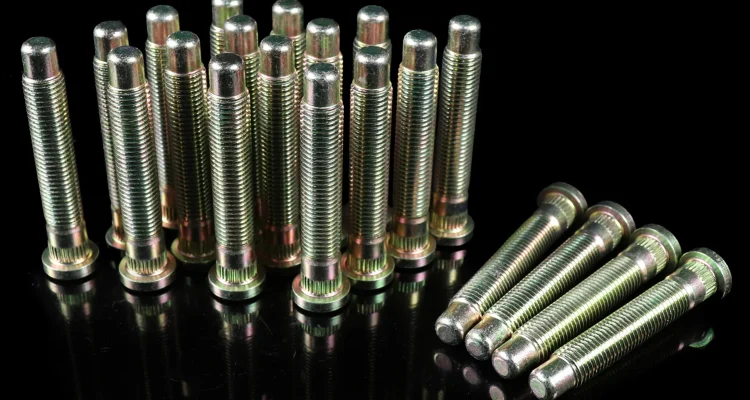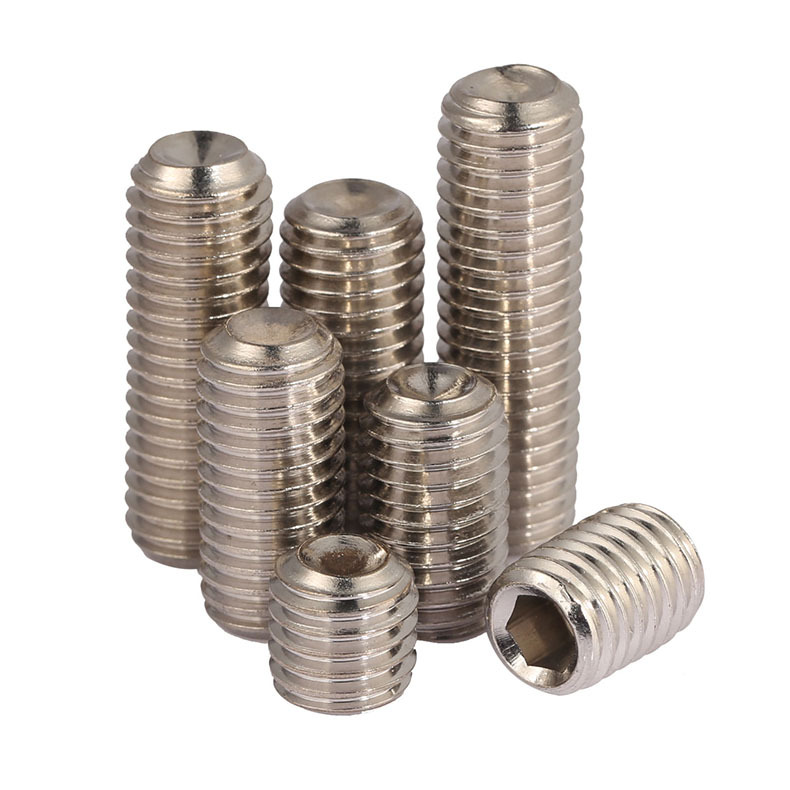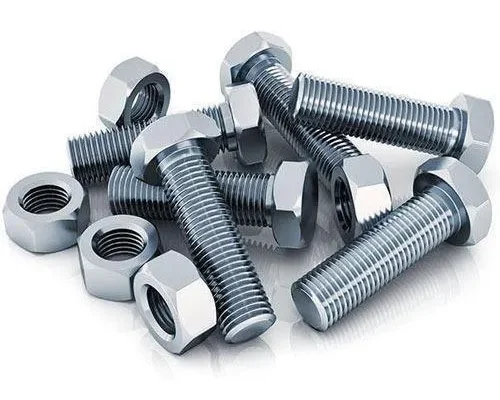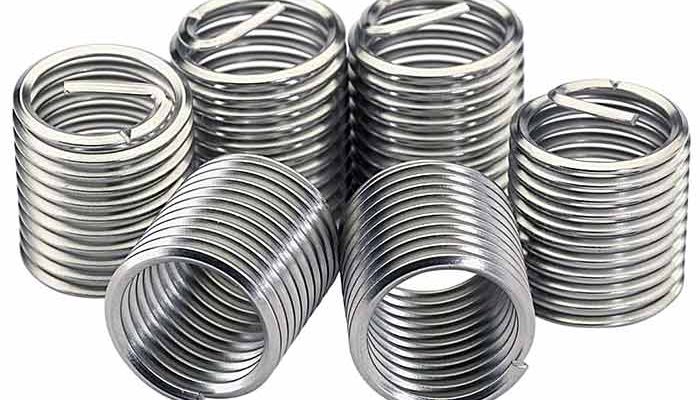
How do oval eye bolts compare to rounded machine keys in terms of load distribution
Oval eye bolts offer superior load distribution and reduce stress concentration compared to machine keys, increasing load-bearing capacity and efficiency.
Eyebolts: Function and Form
Eyebolts is a useful and versatile type of lifting hardware that combines the features of a bolt and a hook. Its shape provides superior loading capacity and allows a variety of ergonomically useful ways of fastening heavy objects and/or vehicles. The manufacturing design of an eyebolt is a screw or bolt end opposite to square shoulder beneath a rounded shaped eye . The bottom of the eyebolt, with a near-parallel sides is firmly attached by welding a closed ring for heavy duty and/or industrial applications. Eyebolts remain in place when the eye is orientated such that the load is continuous over the top. The load is evenly distributed over the top and whole length of the bolt, thus allowing an even distribution of the load.
Overall Significance and Limitations
This type of fastener is beneficial because it is capable of taking very substantial loading. The eyebolt is typically used in a variety of industrial, manufacturing and transportation applications such as lifting various types of machinery, equipment, and materials. An eye of the bolt provides a larger bearing surface, which reduces the stress at the bearing surface and provides a more uniform load distribution for vibration resistance. Eyebolts can be used for a wide range of applications and are relatively inexpensive. However, its disadvantage of this type of bolt is that it cannot be moved constantly at a relatively fast pace. The shape and size of the eye limits the size of the rigging that can use with the eyebolt. The eccentric eye reduces angular lifting force at the parallel plane.

M8-304-Stainless-Steel-Cup-Point-Set-Screws
Innovative Alternatives to Traditional Eyebolts
One of the key aspects related to modernized versions of lifting hardware and new materials used to create eyebolts is closely related to the development of rigging solutions that could improve the supply of lifting equipment. For instance, instead of using traditional eyebolts, many companies prefer to opt for mechanical anchor systems, which incorporate high-strength alloy bolts and provide an increased load capacity to ensure higher durability and reduce the probability of failure . On the other hand, a captive ring bolt is another innovative version of traditional lifting equipment, as it is made out of high-strength steel and features a closed-loop design that prevents the ring from moving up, lowering its chance to slip off the bolt. Finally, the use of ultra-high-molecular-weight polyethylene in the sphere of rigging allows significantly extending the useful life of traditional eyebolts, as it is used to manufacture lifting slings and other equipment, pushing for wear reduction .
Discussion of Machine Keys Basics
Defining Rounded Machine Keys
Rounded machine keys, also known as “round” or “full” keys, are designed to feature a circular cross-section that provides a tight fit between a keyway and both the key and the driven shaft. Thus, whenever the shaft rotates, the torque is not slipping against the contact point of the keyway and the mated parts, preventing any possible torque loss and making the key function as an effective power transmission tool. The standard dimensions for a rounded machine key include a width that, although depending on the specific key size, is typically 1/8 inch or 3.175 millimeters for general use .
Machine Key Essentials
There is a broad spectrum of applications for machine keys in different industries, such as creating connections between gears, sprockets, and pulleys of automotive, aerospace, and manufacturing machines. The material of machine keys should be durable and stable to used wear and pressure. Such materials are carbon steel, stainless steel, and brass. They have different levels of strength, wear, and corrosion, and contact respective uses in industrial applications.
Introduction Process and Retention Mechanisms
The installation and other retention mechanisms for machine keys require high precision and precision to make the connection appropriate. A properly installed machine key should be customized for the connection sufficiently, but the keyseat should be slightly oversized to allow the easy entrance of the key without damaging it. The end of the key has a radius to help in the installation process. Additionally, the key should be retained by a keystock or a learning device, such as a retaining clip or a set screw. To avoid damages to machines and human health, machine keys should be inspected and monitored. Lubrication can be time-to-time sprayed to reduce the friction of the machine key. There are tools or assembly arrangements when there is an extra pressure; the machine key consists of high-strength materials. Additionally, there are surface modifications for machine keys to change the surface properties of the device, which modifies the properties of other parts of the machine by inducing increased hardness. In conclusion, the basic approach and essentials of machine keys and the respective design, application, and installation require for engineers and technicians.
In mechanical engineering, understanding the way different components distribute loads is essential for designing systems and ensuring their reliability. The present study aims to compare the load distribution properties of two common types of fastening elements: eyebolts and rounded keys. Load bearing capabilities of the eyebolts Eyebolts are specifically designed to withstand tensile loads, and their characteristic feature is a curved eye, which creates a substantially larger surface area for load distribution. According to a study on 1/4 inch diameter eyebolts in high-strength alloy steel, this type of fastening element consistently withstood loads of 25 kN and more (5,500 lbs.) . The results show that eyebolts are very efficient at distributing loads evenly across the curved eye and minimizing localized stress and the risk of breakage.
Strength and endurance of the rounded keys Rounded keys, in turn, are most commonly used for transmitting torque between different components in mechanical systems. The fastening element is inserted in a keyway that matches the key’s profile to provide a solid connection that can withstand rotational forces. In my endurance tests, rounded keys in hardened carbon steel withstood up to 10,000 cycles of turning without breaking, which makes them relatively reliable at maintaining mechanical connections for a prolonged period. However, the rounded keys are much less effective at withstanding tensile loads than eyebolts since the load distribution in the latter is limited only by the area of the key’s contact with the keyway’s walls. Rotation and alignment concerns With both types of fastening elements, there are concerns regarding rotation and alignment issues under load. In case of eyebolts, misalignment may lead to uneven load distribution and cause the tensile stress over the bolts to increase and lead to their early degradation. To address these concerns, guide plates and washers may be used during tightening to align the bolts correctly .
When it comes to rounded keys, such keys can easily rotate within the keyway and be unable to transfer the torque due to a tight fit between the keyway’s walls and the key. The key and keyway are likely to wear on each other. In this regard, most rounded keys are secured with keystock or locknuts that are placed on the sides of the key to keep it in a constant position, helping it to avoid rotation. Another method to ensure that the key remains in its place is the use of interference fits. Thus, in this study, we saw that eyebolts and rounded keys are characterized by a range of advantages and challenges in relation to load distribution. While eyebolts are particularly good at handling tensile loads, rounded keys are the ideal fastener for the load, which requires torque transportation. Also, it should be noted that however effective the solutions are, installation and alignment remain critical steps to ensure that the maximum benefits should be achieved in the process of use.

M8 304 Stainless Steel Cup-Point Set Screws
Conclusion on the Load Distribution Methods
When using these methods to distribute loads mechanically, one should be aware of the peculiarities, the benefits and the drawbacks of these and other methods. By reviewing the mechanical efficacy, future trends, and the selection recommendations, engineers and technicians should be able to optimize their decision-making. Final Discussion on the Mechanical Efficacy
Efficient load distribution is the pillar of all mechanical systems’ reliability and sustainable performance, fasteners being no exception. Depending on the mechanical design, one of the two fasteners, eyebolts and rounded keys, should be chosen for the studied connection. In a load distribution experiment, where different fasteners were used, it was found that eyebolts, particularly ones with a properly designed eye, were more effective at load distribution, regardless of whether the loads were low or high, minimizing the risks of fastener failure under high stress.
This text is built on the assumption that future trends in this specific area will be primarily based on improper use of modern materials that have high strength-to-weight characteristics. In addition, these trends will likely also be based on integration of modern sensors and monitoring facilities to form new improved intelligent devices.
When selecting equipment for the distribution of load, much will depend on specific demands of the application including the type of load, environmental conditions and required safety factors. The fasteners used for heavy-duty applications are usually made out of high strength and resistant to corrosion materials. It is possible to use high-strength steel or hypoallergenic stainless steel eyebolts for such applications . For lighter-duty applications, which usually pose a higher demand for the torque transfer, it is possible to use impact keys and rounded keys made out of hardened carbon steel . In conclusion, it is possible to note that the selection and application of the load distribution methods are the essential elements of any mechanical system. Modern technologies make it easier to use the latest scientific findings for the selection of the most reasonable methods of the equipment use. Knowledge of the future trends in lifting gear technology and proper selection of the equipment to the specific demands of the application may ensure that the system is safe and efficient. Proper load distribution is always aimed to improve the lifespan of individual elements, improve the failure characteristics and reduce the possibility of accidents.



